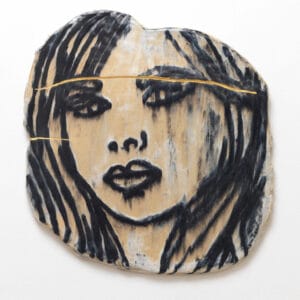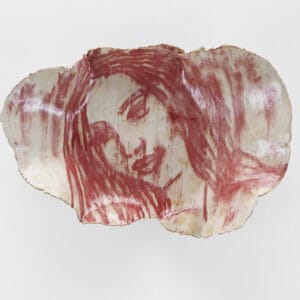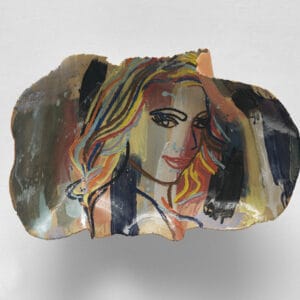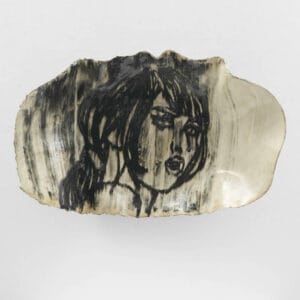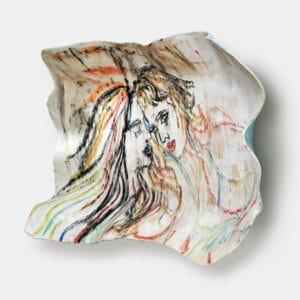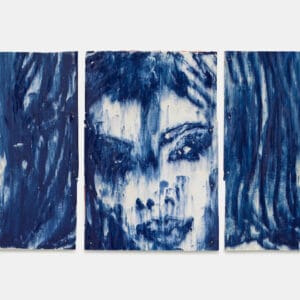Ceramic wall pieces can be considered painting or mural sculptures. They are meant to hang on the wall, just like a painted canvas.
Ceramic wall pieces are among Ghada Amer’s earliest ceramics works, reminiscent of the ceramics plates by Picasso and Matisse that she had so often admired throughout her years growing up in Nice (France). As she acquired the three key principles of clay work (slabs, coils, and pinches), Ghada Amer was immediately drawn to slabs because they looked like the flat surface of a canvas, a material with which she was familiar and on which she could draw.
Ghada Amer’s ceramic wall pieces are thus large clay slabs (because of their shape, Mexican ceramists playfully refer to them as “tortillas”) produced with or without the use of a rolling pin. Ghada Amer does not place her slabs in forms because she likes the fortuitous aspect that the outer borders take in the process of hand rolling them. The borders of her wall plates thus often look unshaped, rough-edged, and irregular. They are elevated to organically achieve a three dimensional appearance, seemingly like a vessel or a shell.
Ghada Amer then proceeds to paint one side of her plates with a colored slip (a wash of tinted clay). Once dry on one side, the artist “draws” on the other side some of her familiar repertoire of sexy women, often times closeup portraits of the pin ups she had painted on other medium. The “drawing” on the clay slabs differs obviously from drawing on paper or on canvas. When drawing on the clay slabs, Ghada Amer uses porcelain inlay, that is colored porcelain clay rolled and applied on the surface to create lines of drawing.
After a slow drying period, each plate is carefully transferred to the kiln to bake for a longer time over low temperature. A transparent glaze is applied once the plate has baked and cooled off, bringing out the vibrant colors of each work.
Once hung on the wall, each of Ghada Amer’s ceramic wall pieces look like a painting, a painted plate, at times a painted shell. Like with her “egg shaped” sculptures, the viewer experiences the play of light and shadow that Amer’s painted ceramic plates create on the wall on which they hang. At different times of day and depending on the lighting in the room, the shadow on the wall undergoes variations, becoming unwittingly an integral part of a dynamic piece.

